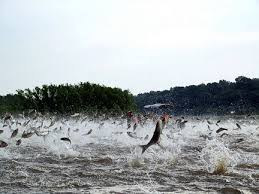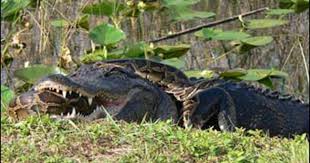Party Crashers: Invasive Species and Iowa Waters
posted
by Ingrid Gronstal on Friday, July 24, 2020
It is the height of the summer recreation season, and, particularly during this strange time, folks have been enjoying fishing, swimming, paddling, and boating on Iowa waterways. It is important to remember that these waters are not swimming pools, though. I got my own reminder a few weeks ago when I cut my foot on a zebra mussel shell in Big Spirit Lake. I have waded and swum in this lake thousands of times over the years, but recently the zebra mussels have taken hold. Now we must adapt.
Invasive species disrupt the environment, affect livelihoods, impede recreation, and damage infrastructure. Iowa’s lakes and rivers support complex ecosystems of plants and animals that have evolved together in balance. When non-native species are introduced into these environments, frequently through human activity, some new species may out-compete native species or otherwise harm the balance of the ecosystem. Such species become invasive (or noxious) species, and they pose serious risks to our resources. According to a 2005 study, invasive species cost $120 billion annually in the United States.
Zebra mussels are infamous invasive species. In addition to having very sharp shells (seriously!), they have wreaked havoc on waterways across the upper Midwest. Native to Asia, these .png) invertebrates arrived in the Great Lakes via cargo ships in the 1980s. In the last several decades, they have spread throughout the Great Lakes, the Mississippi River, and Midwest waterways. Zebra mussels reproduce and spread quickly, and there is no effective way to eradicate them once they are established. These mussels disrupt the food web by filtering phytoplankton and other food sources out of the water in large quantities, out-competing native species for food. They also colonize quickly and in large numbers on hard surfaces such as boats, motors, and even facility intake pipes. Agencies across the region, including the Iowa DNR, have made significant efforts to control and prevent the spread of zebra mussels, but they continue to colonize new waterways across Iowa.
invertebrates arrived in the Great Lakes via cargo ships in the 1980s. In the last several decades, they have spread throughout the Great Lakes, the Mississippi River, and Midwest waterways. Zebra mussels reproduce and spread quickly, and there is no effective way to eradicate them once they are established. These mussels disrupt the food web by filtering phytoplankton and other food sources out of the water in large quantities, out-competing native species for food. They also colonize quickly and in large numbers on hard surfaces such as boats, motors, and even facility intake pipes. Agencies across the region, including the Iowa DNR, have made significant efforts to control and prevent the spread of zebra mussels, but they continue to colonize new waterways across Iowa.

Zebra mussels are far from the only culprits, however. Other invasive aquatic plant and animal species readily come to mind: reed canary grass, curly leaf pondweed, Eurasian watermilfoil, bighead carp, and silver (flying) carp.Not only is it unpleasant to get hit in the face by a flying fish whilst boating, but schools of invasive carp increase turbidity, negatively impact water quality, and threaten populations of native fish species. One question that I frequently hear is “how do we get rid of [invasive species]?” The unfortunate answer is, once they are established, can be almost impossible. Instead of eradication, biologists and natural resources technicians primarily focus on mitigation and population control to limit impacts. When dealing with invasive species, an ounce of prevention is worth millions of dollars of cure.
So, what can you do to help preserve Iowa’s waterways and curb the spread of invasive species? Iowa law lists noxious species and imposes penalties for actions that spread invasives. In the case of zebra mussels, it is important to thoroughly clean and dry your boat, as well as drain, clean, and dry any live wells, before entering a different waterway. Be mindful of the materials you bring in and out of the environment; for instance, emerald ash borer can be spread through firewood. Don’t release non-native species into the environment. In Florida, large non-native constrictors that had been purchased as pets and then released into the wild have d amaged ecosystems within the Everglades and resulted in science-fiction-esque photos of death matches between snakes and alligators. There are resources available from the Iowa DNR and other organizations to help folks identify problem species and prevent unintentional spreading through outdoor recreation.
amaged ecosystems within the Everglades and resulted in science-fiction-esque photos of death matches between snakes and alligators. There are resources available from the Iowa DNR and other organizations to help folks identify problem species and prevent unintentional spreading through outdoor recreation.
As with many environmental issues, it is much easier and cheaper to preserve an ecosystem than it is go back and reverse the damage. With many invasive species, there is no going back to the previous ecosystem because the species cannot be eradicated. At that point, it is a matter of adaptation and mitigation. These are policy lessons we seem to learn over and over again in environmental work. Whether it is water quality, climate change, habitat loss, or damage due to invasive species, acknowledging the problem and taking steps to prevent it before it gets out of control is essential.
- land stewardship
- public beaches
- water quality
- water recreation